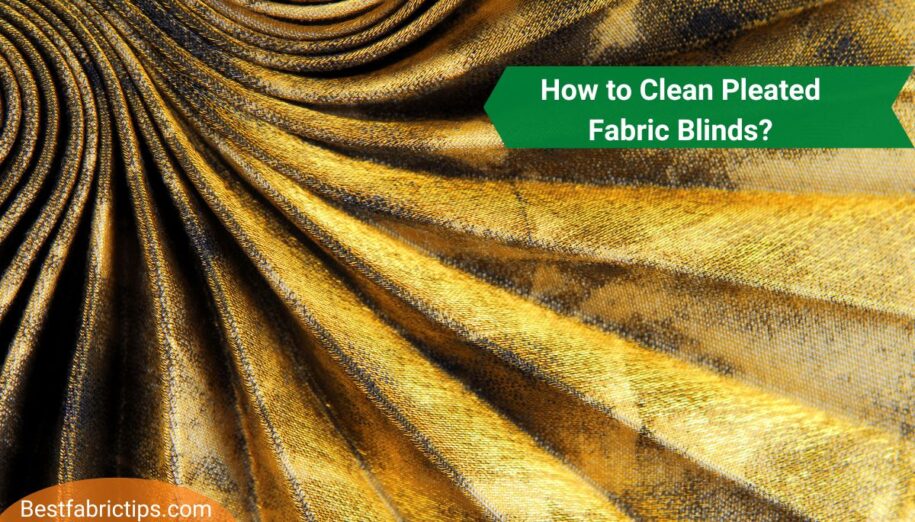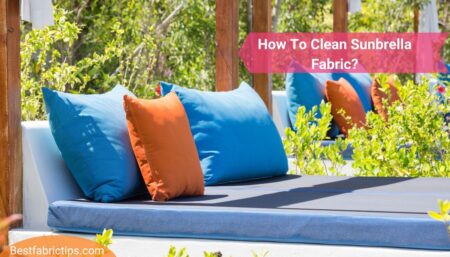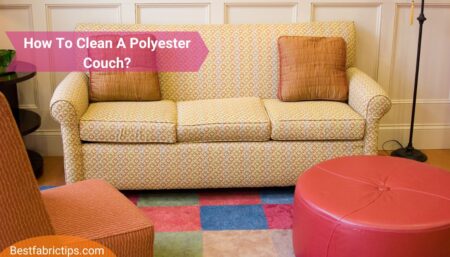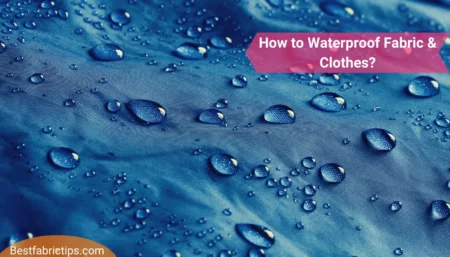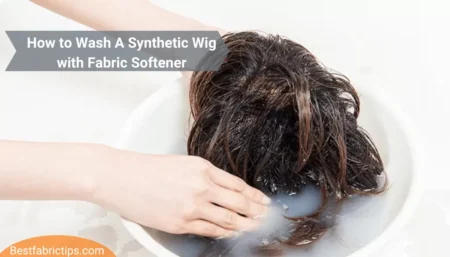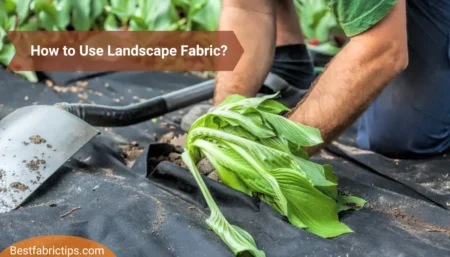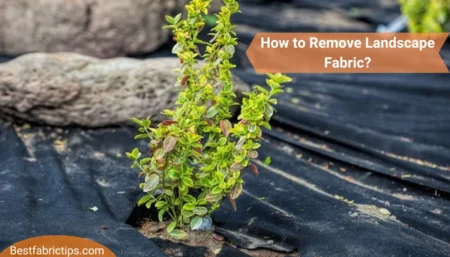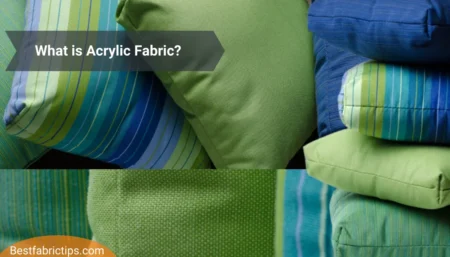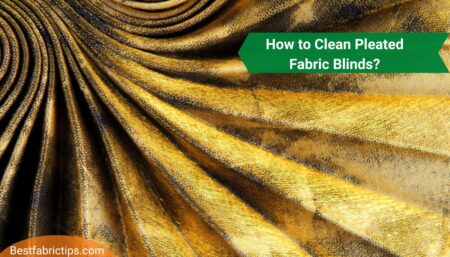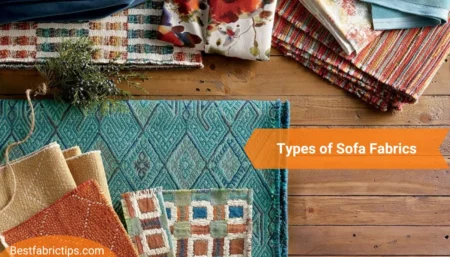If you are wondering how to clean pleated fabric blinds, then you are on the right place. Because they are elegant and simple to operate, pleated fabric blinds are a popular option for window treatments. As with any other home object, though, they can become dirty and require cleaning. Follow these procedures to clean pleated fabric blinds effectively:
- Compile your supplies: A vacuum with a soft brush attachment, a lint roller, a feather duster, a microfiber cloth, and a light detergent are required.
- Begin by cleaning the window blinds: Utilize the soft brush attachment to remove dust, grime, and debris from the cloth with care. Make certain that the blinds are properly cleaned by vacuuming both sides.
- Next, remove any leftover dust or pet hair from the cloth with a lint roller. If you don’t have a lint roller, you can instead use masking or duct tape wrapped around your hand.
- Mix a little amount of mild detergent with warm water in a bucket if the blinds are very unclean or stained. Soak a microfiber cloth in the solution and wipe the fabric gently, taking care not to saturate the blinds.
- Use a feather duster or a clean microfiber cloth to dust the blinds’ slats and hardware once you have finished cleaning the fabric.
- Open the blinds and allow them to air dry thoroughly before closing them back up.
By following these procedures, you may efficiently clean and maintain the pristine appearance of your pleated fabric blinds. To avoid harming the blinds, it is essential to use a light detergent and be delicate while washing the fabric. Regular cleaning will not only keep your blinds looking good, but it will also assist to prolong their life.
Can pleated blinds be washed?
Pleated fabric blinds can be washed, but it is important to follow a few guidelines to ensure that they are cleaned effectively and do not get damaged in the process.
First, it is important to use a mild detergent when washing pleated fabric blinds. Harsh chemicals or bleach can damage the fabric and cause it to fade or become discolored. A mild detergent or a gentle, pH-neutral soap is the best choice.
Next, be sure to use lukewarm water when washing the blinds. Hot water can shrink or distort the fabric, while cold water may not effectively remove dirt and stains.
It is generally not recommended to fully submerge pleated fabric blinds in water, as this can cause them to become too wet and heavy. Instead, gently blot the blinds with a microfiber cloth or sponge that has been soaked in the cleaning solution. Be sure to rinse the blinds thoroughly after cleaning to remove any soap residue.
After cleaning, it is important to allow the blinds to air dry completely before closing them again. This will help to prevent the growth of mold or mildew, as well as prevent the blinds from becoming misshapen or wrinkled.
Overall, it is possible to wash pleated fabric blinds, but it is important to be gentle and use a mild detergent to avoid damaging the fabric. If the blinds are particularly dirty or have stains that are difficult to remove, it may be best to seek professional cleaning services.
How to clean pleated fabric blinds and cellular blinds?
Both pleated blinds and cellular blinds may be cleaned using comparable techniques. Here are the subsequent steps:
- Compile your supplies. A vacuum with a soft brush attachment, a lint roller, a feather duster, a microfiber cloth, and a light detergent are required.
- Begin by cleaning the window blinds. Utilize the soft brush attachment to remove dust, grime, and debris from the cloth with care. Make certain that the blinds are properly cleaned by vacuuming both sides.
- Next, remove any leftover dust or pet hair from the cloth with a lint roller. If you don’t have a lint roller, you can instead use masking or duct tape wrapped around your hand.
- Mix a little amount of mild detergent with warm water in a bucket if the blinds are very unclean or stained. Soak a microfiber cloth in the solution and wipe the fabric gently, taking care not to saturate the blinds.
- Use a feather duster or a clean microfiber cloth to dust the blinds’ slats and hardware once you have finished cleaning the fabric.
- Open the blinds and allow them to air dry thoroughly before closing them back up.
When cleaning pleated or cellular blinds, it is essential to use a light detergent and to be careful in order to prevent harming the fabric. Regular cleaning will not only keep your blinds looking good, but it will also assist to prolong their life.
Are dryer sheets good for cleaning blinds?
Dryer sheets can be effective for removing dust and static from blinds, but they are not a substitute for a thorough cleaning. Dryer sheets contain chemicals and fragrances that can leave a residue on the blinds and potentially cause discoloration or fading over time.
To effectively clean blinds, it is recommended to use a combination of vacuuming, dusting, and gentle wiping with a microfiber cloth or sponge. If the blinds are particularly dirty or have stains, a mild detergent can be used to gently blot the fabric.
After cleaning, it is important to allow the blinds to air dry completely before closing them again. This will help to prevent the growth of mold or mildew, as well as prevent the blinds from becoming misshapen or wrinkled.
In summary, while dryer sheets can be useful for removing dust and static from blinds, they are not a substitute for a thorough cleaning and should not be used as the primary method of cleaning.
How do you clean fabric blinds without removing them?
Fabric blinds may be cleaned without removal using several methods:
Dust blinds with a gentle, dry cloth or feather duster. This removes light dust and grime well.
- Vacuuming: Gently run the brush attachment over the blinds. This removes tougher dust and grime.
- Spot cleaning: Use a mild detergent and soft cloth to spot clean fabric blinds with stains or spills. Apply a little detergent and water to the stain and blot until it’s gone.
- Steam cleaning: A portable steamer can gently clean blinds. This removes dirt, dust, and stains without chemicals.
- Washing: Remove soiled fabric blinds and wash them in the kitchen or tub. Soaking the blinds in mild detergent and water, cleaning, and air drying them is likely.
Be cautious and don’t bend or tug on the cloth, since this might harm the blinds.
What is the easiest way to clean fabric blinds?
Cleaning fabric blinds is a simple process that can be done with household materials. Here is a step-by-step guide for cleaning fabric blinds:
- Gather your supplies: You will need a vacuum with a soft brush attachment, a microfiber cloth, a mild detergent (such as dish soap), and a bucket of warm water.
- Vacuum the blinds: Use the soft brush attachment on your vacuum to gently remove any dust or dirt from the blinds. Be sure to run the brush over both the front and back of the blinds.
- Spot clean the blinds: If there are any spots or stains on the blinds, mix a small amount of mild detergent with warm water and use a microfiber cloth to gently scrub the affected areas. Rinse the cloth with clean water and wipe away any soap residue.
- Wipe down the blinds: Dip a clean microfiber cloth in the bucket of warm water and wring it out. Use the damp cloth to wipe down the entire surface of the blinds, front and back. Be sure to rinse the cloth and wring it out frequently to avoid leaving any soap residue on the blinds.
- Dry the blinds: Once you have finished wiping down the blinds, use a clean, dry microfiber cloth to gently blot away any excess water. You can also use a hair dryer on a low heat setting to speed up the drying process.
By following these steps, you should be able to effectively clean your fabric blinds and keep them looking fresh and clean.
Can you use white vinegar on fabric blinds?
Yes, white vinegar can be used to clean fabric blinds. White vinegar is a natural cleaning agent that is safe to use on most fabrics and can be effective at removing stains and eliminating odors. To use white vinegar to clean your fabric blinds, you can mix equal parts white vinegar and water in a spray bottle and use it to spot clean any stains or spots on the blinds. You can also use a microfiber cloth or sponge to apply the vinegar solution to the blinds and wipe them down.
It’s important to keep in mind that white vinegar has a strong smell that may not be pleasant to some people. If you are sensitive to strong odors, you may want to dilute the vinegar with more water or use a mild detergent instead. Additionally, it’s always a good idea to test a small, inconspicuous area of the fabric first to make sure that the vinegar does not cause any discoloration or damage.
How often should you clean fabric blinds?
The frequency with which you should clean your fabric blinds will depend on a variety of factors, including the amount of use and exposure to dust and dirt, the type of fabric, and your personal preference. In general, it is a good idea to vacuum your fabric blinds at least once a month to remove dust and dirt that has accumulated on them. If your blinds are exposed to a lot of dirt or other contaminants, you may want to clean them more frequently.
If your fabric blinds are visibly dirty or stained, you should spot clean them as needed. This can be done with a mild detergent or a solution of white vinegar and water. If you prefer a more thorough cleaning, you can also wipe down the entire surface of the blinds with a damp cloth and mild detergent on a more regular basis.
It’s important to note that fabric blinds can be delicate, so it’s important to be gentle when cleaning them and to follow the manufacturer’s instructions for care. Over-cleaning or using harsh cleaning products can cause damage to the fabric or cause the color to fade.
How to clean fabric pleated accordion blinds?
To clean fabric pleated accordion blinds, you can follow these steps:
- Gather your supplies: You will need a vacuum with a soft brush attachment, a microfiber cloth, a mild detergent (such as dish soap), and a bucket of warm water.
- Vacuum the blinds: Use the soft brush attachment on your vacuum to gently remove any dust or dirt from the blinds. Be sure to run the brush over both the front and back of the blinds.
- Spot clean the blinds: If there are any spots or stains on the blinds, mix a small amount of mild detergent with warm water and use a microfiber cloth to gently scrub the affected areas. Rinse the cloth with clean water and wipe away any soap residue.
- Wipe down the blinds: Dip a clean microfiber cloth in the bucket of warm water and wring it out. Use the damp cloth to wipe down the entire surface of the blinds, front and back. Be sure to rinse the cloth and wring it out frequently to avoid leaving any soap residue on the blinds.
- Dry the blinds: Once you have finished wiping down the blinds, use a clean, dry microfiber cloth to gently blot away any excess water. You can also use a hair dryer on a low heat setting to speed up the drying process.
It’s important to be gentle when cleaning pleated accordion blinds to avoid damaging the fabric or the pleats. Be sure to follow the manufacturer’s instructions for care and avoid using harsh cleaning products or over-cleaning the blinds.
How to clean fabric blinds in bathtub?
Cleaning fabric blinds in the bathtub can be a convenient and effective way to remove dirt and stains from the blinds. Here is a step-by-step guide for cleaning fabric blinds in the bathtub:
- Gather your supplies: You will need a mild detergent (such as dish soap), a scrub brush or sponge, and a clean towel.
- Fill the bathtub with warm water: Fill the bathtub with enough warm water to fully submerge the blinds.
- Add the detergent: Add a small amount of mild detergent to the water and mix it in to create suds.
- Submerge the blinds: Carefully place the blinds in the tub, making sure that they are fully submerged in the water.
- Scrub the blinds: Use the scrub brush or sponge to gently scrub the blinds, paying extra attention to any stains or spots. Be sure to scrub both the front and back of the blinds.
- Rinse the blinds: Once you have finished scrubbing the blinds, rinse them thoroughly with clean water to remove any soap residue.
- Dry the blinds: Remove the blinds from the tub and gently blot them with a clean towel to remove excess water. You can also hang the blinds up to dry, or use a hair dryer on a low heat setting to speed up the drying process.
By following these steps, you should be able to effectively clean your fabric blinds in the bathtub. Just be sure to use a mild detergent and be gentle when scrubbing the blinds to avoid damaging the fabric.
How to clean pleated fabric window blinds from cigarette smoke?
Cleaning pleated fabric window blinds that have been exposed to cigarette smoke can be a bit of a challenge, as the smoke can leave a strong odor and yellowish residue on the fabric. Here are some steps you can follow to clean pleated fabric window blinds that have been exposed to cigarette smoke:
- Vacuum the blinds: Use a vacuum with a soft brush attachment to remove any dust or dirt from the blinds. Be sure to run the brush over both the front and back of the blinds.
- Spot clean the blinds: If there are any visible stains or spots on the blinds, mix a small amount of mild detergent with warm water and use a microfiber cloth to gently scrub the affected areas. Rinse the cloth with clean water and wipe away any soap residue.
- Deodorize the blinds: To remove the cigarette smoke odor from the blinds, you can try using a natural odor-eliminating spray, such as white vinegar or baking soda mixed with water. Simply mix a small amount of the deodorizing agent with water in a spray bottle and mist the blinds evenly. You can also try placing bowls of white vinegar or baking soda around the room to absorb the smoke odor.
- Wipe down the blinds: Dip a clean microfiber cloth in a bucket of warm water and wring it out. Use the damp cloth to wipe down the entire surface of the blinds, front and back. Be sure to rinse the cloth and wring it out frequently to avoid leaving any soap residue on the blinds.
- Dry the blinds: Once you have finished wiping down the blinds, use a clean, dry microfiber cloth to gently blot away any excess water. You can also use a hair dryer on a low heat setting to speed up the drying process.
By following these steps, you should be able to effectively clean and deodorize your pleated fabric window blinds that have been exposed to cigarette smoke.

